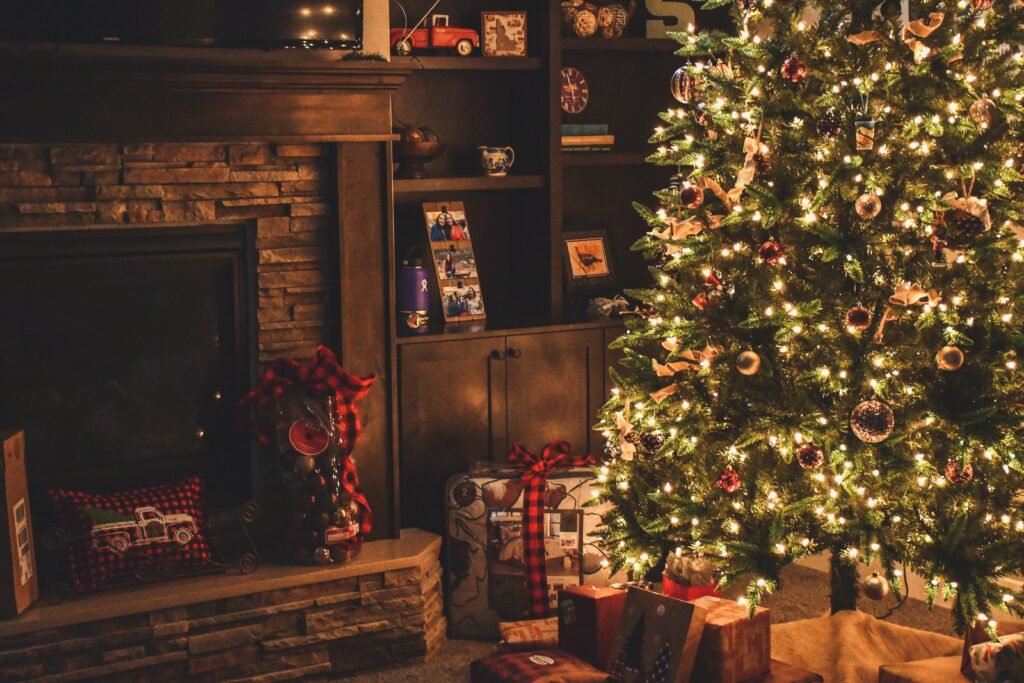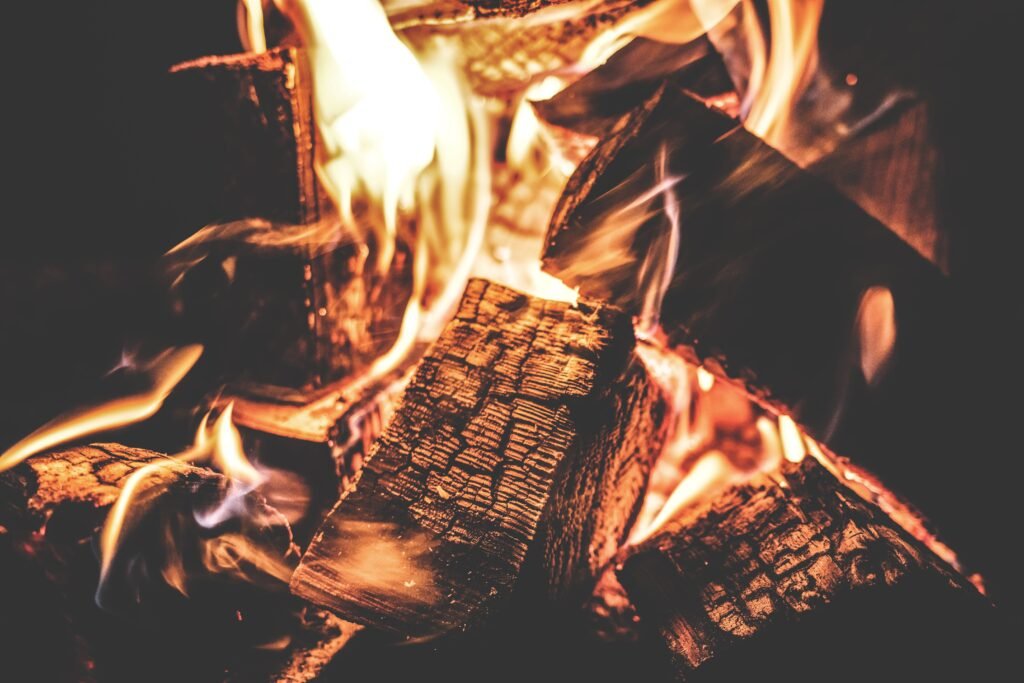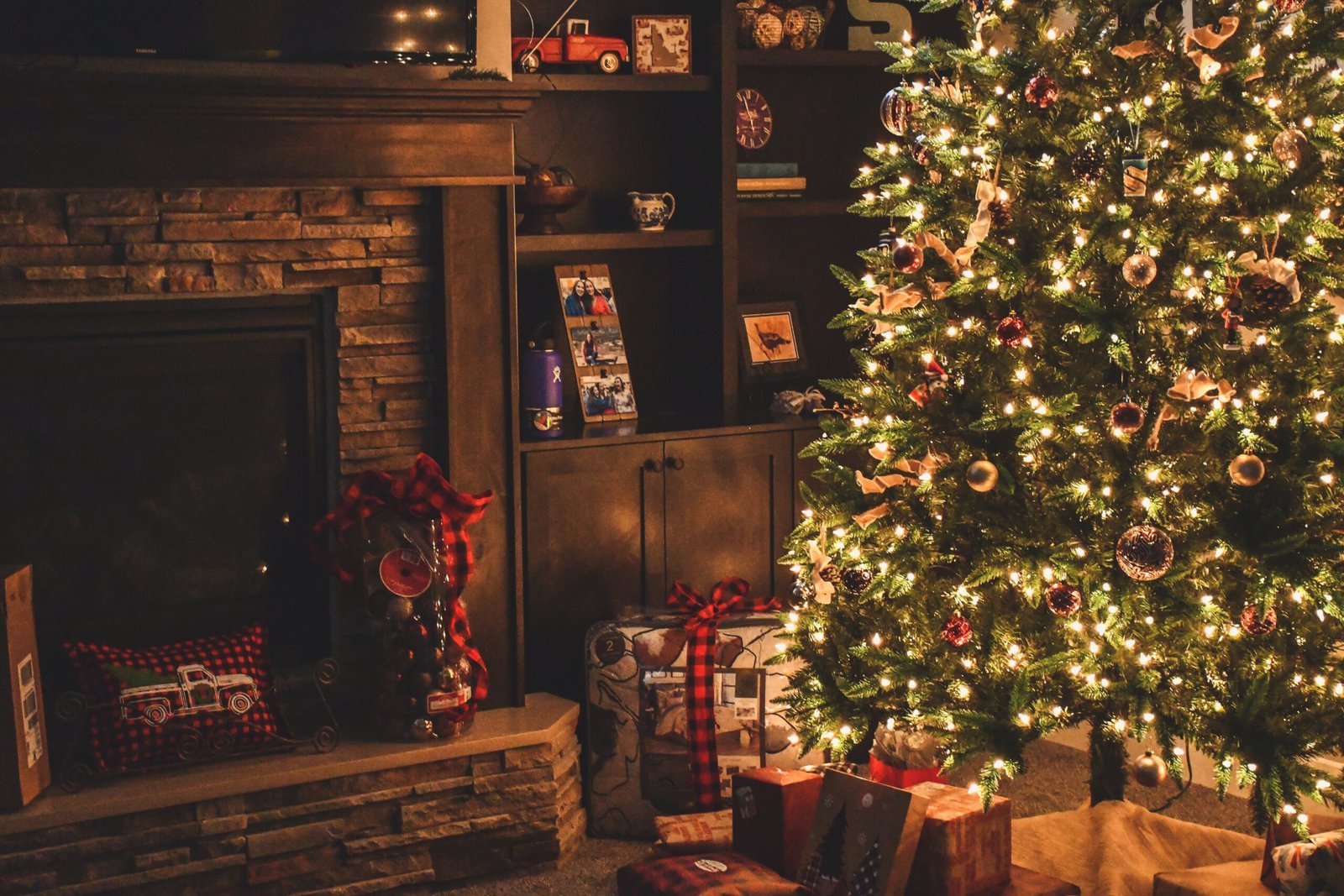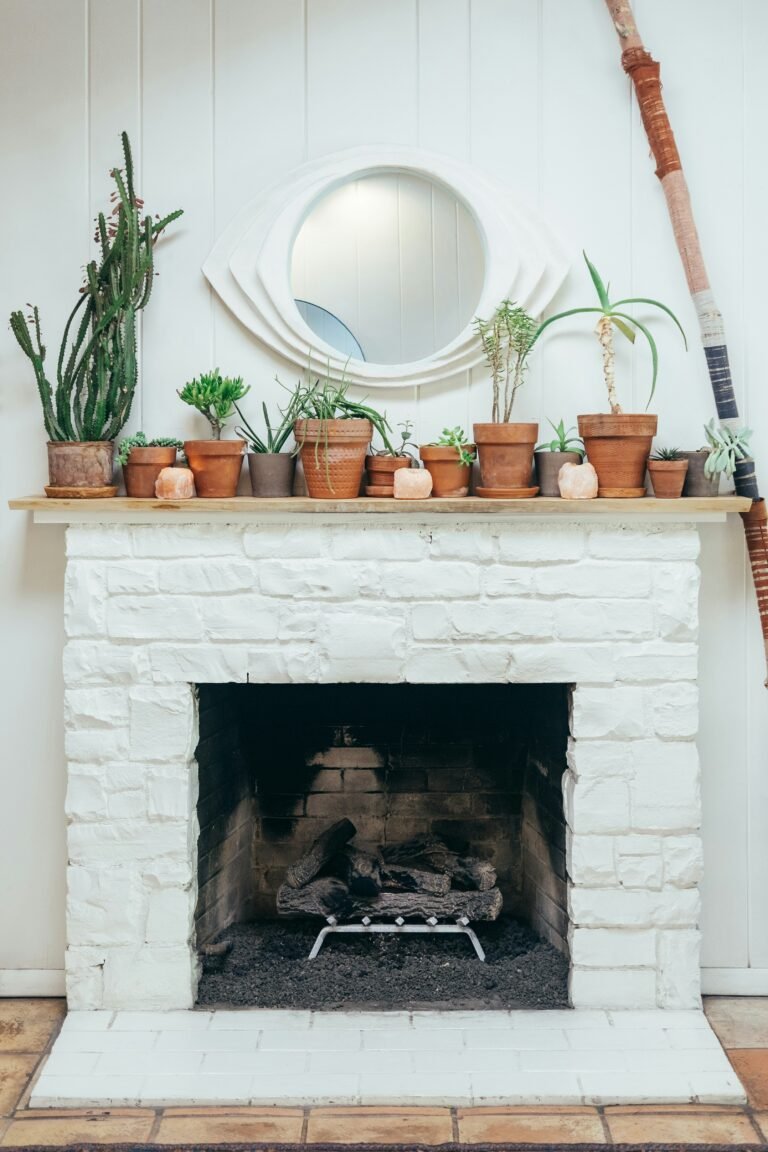Imagine cozy winter nights spent by a crackling fireplace, enveloped in warmth and comfort. Now, picture that fireplace as one you built with your own hands, custom-designed to suit your style and preferences. In this article, we will take you on a journey of building your very own DIY fireplace from scratch. From choosing the right materials to mastering the construction process, this guide will equip you with the knowledge and confidence to create a stunning centerpiece in your home that will not only provide heat but also become a cherished symbol of your creativity and craftsmanship.
Materials and Tools
Choosing the Right Fireplace Design
When embarking on the journey of building your own DIY fireplace, one of the first steps is to choose the right design that suits your aesthetic preferences and fits well within your space. Consider whether you prefer a traditional, rustic, or modern fireplace design. Take into account the dimensions of your room and the overall ambience you want to create. Whether it’s a cozy wood-burning fireplace or an elegant electric fireplace, ensure that you select a design that aligns with your personal style.
Selecting the Suitable Location
Choosing the perfect location for your fireplace is crucial for both practicality and aesthetics. Consider the layout of your room and the existing architectural elements. You want to ensure that the fireplace becomes a focal point without overpowering the space. Take into account factors such as structural support, proximity to windows or doors, and the availability of proper ventilation. Additionally, consider the type of fuel you intend to use (wood, gas, or electric) and ensure that your chosen location can accommodate the necessary connections.
Gathering Necessary Permits and Permissions
Before starting any construction project, it is essential to gather the necessary permits and permissions required by your local building codes. Check with your municipality or relevant authorities to determine the specific regulations and requirements for building a fireplace. Obtaining the proper permits will not only ensure your safety but also save you from potential legal issues. Remember, it is always better to comply with local regulations to guarantee a smooth and hassle-free construction process.
Measuring and Marking the Area
To ensure accuracy and precision during construction, it is crucial to measure and mark the area where your fireplace will be installed. Use a tape measure to determine the dimensions of the space, considering the width, height, and depth required for your chosen fireplace design. Mark the area using chalk or painter’s tape, clearly outlining the boundaries to guide your construction process. Accurate measurements and markings will provide a solid foundation for building your fireplace.
Safety Equipment and Supplies
Safety should always be a top priority when constructing a fireplace. Before starting the project, gather the necessary safety equipment and supplies to protect yourself throughout the construction process. This may include safety goggles, gloves, a dust mask, and a fire extinguisher. Additionally, ensure you have proper ventilation and a well-lit workspace to minimize potential hazards. Having the right safety equipment and supplies on hand will help keep you safe and confident during the construction process.
Essential Tools for Construction
Equipping yourself with the necessary tools is essential to complete your DIY fireplace project efficiently. Some of the basic tools you will need include a tape measure, level, hammer, screwdriver, drill, circular saw, chisel, and a trowel. Depending on your chosen fireplace design, you may also need specialized tools such as a tile cutter or a masonry saw. Ensure that all your tools are in good working condition and ready to be used. Having the right tools on hand will make the construction process much smoother.
Preparing the Site
Clearing the Area
Before beginning construction, it is vital to clear the area where your fireplace will be installed. Remove any furniture, decorations, or personal belongings from the space. This will provide a clean and unobstructed area to work in, minimizing the risk of accidents or damage to your property. Clearing the area also allows you to visualize the space better and plan the construction process more effectively.
Laying the Foundation
A solid foundation is crucial for the stability and durability of your fireplace. After clearing the area, prepare the foundation by excavating the ground to the required depth. Follow the instructions provided by your chosen fireplace’s manufacturer to determine the appropriate depth for your foundation. Once the ground is excavated, lay a layer of gravel or a concrete slab as the base for your fireplace. Ensure the foundation is leveled and properly compacted to provide a stable platform for the construction process.
Installing a Fireproof Barrier
To ensure the safety of your home and prevent potential fires, it is essential to install a fireproof barrier around your fireplace. This barrier will help contain any stray sparks or embers and protect your surrounding walls and flooring. Depending on the regulations and requirements of your local building codes, you may need to use specific fire-resistant materials such as fire-rated drywall or cement board. Install the fireproof barrier according to the manufacturer’s instructions, ensuring that it provides adequate protection for your specific fireplace design.
Creating a Level Base
After the foundation is laid, creating a level base is crucial for the stability of your fireplace. Begin by marking the layout of your fireplace design on the foundation. Use a level to ensure that the base is perfectly horizontal and adjust as needed. A level base will ensure that your fireplace is structurally sound and prevent any issues with the alignment of your fireplace components.
Building a Support Structure
Depending on the complexity and design of your fireplace, you may need to build a support structure to provide stability and structural integrity. This structure will serve as the backbone of your fireplace, supporting the firebox, chimney, and any additional features such as a mantel or surround. Ensure that the support structure is securely fastened and properly aligned with your fireplace design. Building a solid support structure will guarantee the long-lasting durability of your DIY fireplace.

This image is property of images.pexels.com.
Constructing the Fireplace
Choosing the Material for the Fireplace
Selecting the right material for your fireplace is crucial for achieving your desired aesthetic and ensuring the functionality of your fireplace. Common materials used in fireplace construction include brick, stone, tile, metal, and concrete. Consider the style, durability, and heat resistance of each material option before making your final decision. Additionally, think about the maintenance requirements and compatibility with your chosen fireplace design. Choose a material that not only complements your decor but also meets your safety and performance preferences.
Building the Hearth
The hearth is a significant component of your fireplace, providing a functional space for the fire to burn and a visually appealing focal point. Start by determining the size and shape of your hearth, ensuring it aligns with your chosen fireplace design. Lay the foundation for the hearth using fire-resistant materials such as concrete or brick. Build up the sides and front of the hearth, following the specifications provided by your fireplace design or manufacturer. Ensure that the hearth is level and securely attached to the support structure.
Creating the Firebox
The firebox is the chamber in which the fire will be contained. Its construction is critical to ensure the safety and efficiency of your fireplace. If you are using a pre-fabricated firebox, carefully follow the manufacturer’s instructions for installation. If you are constructing the firebox from scratch, consider using firebricks or refractory bricks for their high heat resistance. Build the firebox walls, leaving adequate space for ventilation and the insertion of the chimney or vent. Ensure the firebox is properly insulated to prevent heat transfer to surrounding materials.
Installing a Chimney or Vent
Proper ventilation is essential for a safe and functional fireplace. Installing a chimney or vent allows the smoke, gases, and byproducts of combustion to be safely expelled from your home. Depending on your fireplace design and local regulations, you may be required to install a traditional masonry chimney or utilize a prefabricated metal vent system. Ensure that the chimney or vent is secured to the support structure and properly aligned with the firebox before proceeding with the rest of the construction process. Proper installation of the chimney or vent will help maintain good airflow and prevent the buildup of harmful gases.
Constructing the Surround or Mantel
The surround or mantel adds the finishing touch to your fireplace, enhancing its visual appeal and providing a space for decorative elements. Choose a surround or mantel design that complements your overall aesthetic and fits well within the dimensions of your fireplace. Construct the surround or mantel using the chosen material, such as wood, stone, or tile. Ensure that it is securely fastened to the support structure and aligns properly with the rest of your fireplace components. The surround or mantel will give your fireplace a polished and cohesive look.
Fireplace Safety Measures
Fireproofing the Surrounding Area
To ensure the safety of your home and prevent fire hazards, it is essential to fireproof the immediate area surrounding your fireplace. Use fire-resistant materials such as non-combustible tiles or stone to create a barrier between the fireplace and any combustible materials, such as walls or flooring. Ensure that the fireproof material extends a suitable distance from all sides of the fireplace to prevent accidental contact with flammable objects.
Insulating the Walls
Proper insulation helps prevent heat transfer from the fireplace to the surrounding walls. Install insulation material behind the walls adjacent to the fireplace to minimize the risk of combustion or damage to the structure. Consider using fire-rated insulation to ensure maximum protection. Properly insulated walls will not only enhance the efficiency of your fireplace but also contribute to the overall safety and comfort of your home.
Ventilation and Airflow Considerations
Proper ventilation and airflow are crucial for the efficient operation of your fireplace and the removal of harmful gases. Ensure that the chimney or vent is correctly installed and functioning adequately to facilitate the circulation of fresh air. Additionally, make sure that the space around the fireplace allows for proper airflow, avoiding any obstructions that may impede the combustion process. Proper ventilation and airflow will help maintain a clean and efficient burn, minimizing the risk of carbon monoxide poisoning and promoting better indoor air quality.
Installing Smoke and Carbon Monoxide Detectors
As an added layer of safety, it is highly recommended to install smoke and carbon monoxide detectors near your fireplace. These detectors will alert you to any potential hazards and provide early warning in the event of a fire or the presence of harmful gases. Regularly check the batteries and test the functionality of the detectors to ensure they are in proper working order. Smoke and carbon monoxide detectors are essential in safeguarding your home and the well-being of your loved ones.
Maintaining Clearances and Safety Standards
Maintaining proper clearances around your fireplace is essential for preventing fires and ensuring the safety of your home. Follow the manufacturer’s specifications or local building codes to determine the required distances between your fireplace and surrounding structures such as walls, furniture, or textiles. Adhering to these clearances will help prevent accidents and allow for proper airflow, enhancing the overall performance and safety of your fireplace.

This image is property of images.pexels.com.
Finishing Touches
Applying the Finishing Material
Once the construction of your fireplace is complete, it’s time to apply the finishing material that brings your vision to life. This may include painting, staining, or finishing the materials used for the surround, mantel, or other decorative elements. Choose a finish that enhances the overall aesthetic appeal of your fireplace while considering its compatibility with the selected materials. Ensure that the finishing material is applied evenly and according to the manufacturer’s instructions to achieve a polished and professional look.
Sealing and Insulating the Fireplace
To further enhance the efficiency and safety of your fireplace, sealing and insulating the necessary components is crucial. Use appropriate sealants and insulation materials to fill any gaps or cracks that may be present in the firebox, chimney, or surrounding areas. This will prevent the escape of heat and gases, ensuring that your fireplace operates at its maximum potential. Proper sealing and insulation will also contribute to the longevity of your fireplace and protect it from the effects of weathering and wear.
Adding Decorative Elements
To personalize your fireplace and create a warm and inviting atmosphere, consider adding decorative elements that reflect your style and taste. This may include artwork, mirrors, photographs, or ornaments placed on the mantel or the surrounding walls. Additionally, you can incorporate plants, candles, or decorative firewood holders to enhance the visual appeal of your fireplace. By adding these decorative touches, you can transform your fireplace into a focal point that brings joy and warmth to your living space.
Choosing the Right Fireplace Accessories
Selecting the appropriate accessories for your fireplace not only adds functionality but also enhances its aesthetic appeal. Look for tools such as a fireplace poker, shovel, and brush to facilitate maintenance and cleaning tasks. Consider investing in a decorative fireplace screen or glass doors to provide an added layer of safety and style. Choosing the right fireplace accessories will elevate your fireplace experience and ensure that it remains a beautiful and functional addition to your home.
Painting or Staining the Mantel
If your chosen mantel material allows for it, painting or staining it can add a layer of customization to your fireplace. Consider the overall color palette of your room and choose a paint or stain that complements it. A fresh coat of paint can give a traditional mantel a modern twist, while a rich stain can enhance the natural beauty of wood. Ensure that you properly prepare the surface and follow the manufacturer’s instructions for the chosen paint or stain to achieve a durable and long-lasting finish.
Fireplace Installation
Connecting the Gas or Electric Supply
If you have chosen a gas or electric fireplace, connecting the appropriate supply is a crucial step before enjoying the warmth and ambiance it provides. For gas fireplaces, consult a licensed professional to safely connect the gas line and ensure that there are no leaks. If you have opted for an electric fireplace, consult an electrician to install the necessary wiring and outlet. It is essential to rely on professionals for these installations to ensure the safety and proper functioning of your fireplace.
Installing the Gas Starter or Electric Ignition
For wood-burning fireplaces, the installation of a gas starter or electric ignition can provide convenience and ease in igniting the fire. This additional feature allows you to start the fire without the need for matches or kindling. Consult a professional to install the gas starter or electric ignition according to the manufacturer’s instructions and local regulations. Proper installation will ensure reliable ignition and a hassle-free fireplace experience.
Ensuring Proper Ventilation
Proper ventilation is vital for ensuring the safe use of your fireplace. If you have chosen a gas or wood-burning fireplace, ensure that the chimney or vent is functioning correctly and draws the smoke out effectively. Regularly inspect and clean the chimney to remove any buildup of creosote or debris, which can pose a fire hazard. Ensure that your fireplace has enough fresh air intake to support combustion and maintain good airflow. Proper ventilation will allow your fireplace to operate efficiently and without issues.
Testing for Gas Leaks or Electrical Issues
Before fully enjoying your gas or electric fireplace, it is crucial to test for any gas leaks or electrical issues. For gas fireplaces, consult a professional to perform a leak test and ensure that all connections are secure. For electric fireplaces, inspect the wiring for any loose connections or damage. Additionally, test the functionality of the electric ignition or controls to ensure that they operate as intended. Proper testing will guarantee the safety and functionality of your fireplace.
Professional Inspection or Certification
Once your fireplace is complete and operational, it is recommended to have it inspected or certified by a professional. This will ensure that your fireplace meets all safety standards and regulations. A professional inspection can identify any potential issues or defects that may require correction. By obtaining a certification, you will have peace of mind knowing that your fireplace has been thoroughly examined and meets all necessary requirements.

This image is property of images.pexels.com.
Maintaining and Cleaning the Fireplace
Regular Chimney Cleaning
To ensure the safe and efficient operation of your fireplace, regular chimney cleaning is essential. Over time, creosote and debris can accumulate within the chimney, posing a fire hazard. Hire a professional chimney sweep to clean your chimney at least once a year, or more frequently if you use your fireplace frequently. Regular cleaning will remove any obstructions, improve airflow, and minimize the risk of chimney fires or dangerous smoke backup.
Cleaning the Firebox and Hearth
Maintaining a clean firebox and hearth not only promotes the safety of your fireplace but also enhances its appearance. Remove any ash or debris from the firebox after each use. Use a dustpan and brush or a vacuum cleaner specifically designed for fireplaces to clean the hearth. Regular cleaning will prevent the buildup of combustible materials and ensure that your fireplace remains safe and visually appealing.
Removing Ash and Soot
As you use your fireplace, ash and soot will accumulate within the firebox and chimney. It’s essential to remove this buildup regularly to maintain the efficiency and safety of your fireplace. Use a fireplace shovel or a specialized ash vacuum to carefully remove the ash from the firebox. For the chimney, consult a professional chimney sweep to remove the soot and creosote. Proper removal of ash and soot will help prevent detrimental effects to your fireplace and ensure its continued performance.
Inspecting and Replacing Damaged Components
Regular inspection of your fireplace is crucial to identify any damaged or worn-out components that may require replacement. Check the firebox, chimney, vents, and any other parts for signs of damage, such as cracks, deterioration, or loose connections. Address any issues promptly to prevent further damage and ensure the continuous functioning of your fireplace. Regular inspections and timely replacements will extend the lifespan of your fireplace and maintain its performance.
Annual Professional Maintenance
In addition to regular cleaning and inspection, scheduling annual professional maintenance is highly recommended to keep your fireplace in optimal condition. Hire a professional fireplace technician or chimney sweep to perform a thorough inspection, cleaning, and maintenance of your fireplace. They will ensure that all components are functioning correctly, address any issues, and provide recommendations for any necessary repairs or improvements. Annual professional maintenance will give you peace of mind, knowing that your fireplace is in good hands and will continue to provide warmth and beauty to your home.
Troubleshooting Common Issues
Difficulty Lighting the Fire
If you experience difficulties lighting your fire, several factors might be causing the issue. Ensure that you are using dry and well-seasoned firewood, as damp wood can be challenging to ignite. Check that the damper is fully open to allow for proper airflow. Additionally, make sure the chimney or vent is clean and not obstructed by debris. If problems persist, consult a professional technician to investigate and resolve any underlying issues.
Smoke Backing Up into the Room
Smoke backing up into the room is a common issue that can detract from the enjoyment of your fireplace. This problem often occurs when there is inadequate ventilation or a poorly functioning chimney. Check that the damper is fully open and that there are no obstructions blocking the chimney or vent. If the issue persists, consult a professional chimney sweep or fireplace technician to diagnose and address the problem.
Uneven Heating or Drafting
If your fireplace is not providing consistent heating or there are uneven drafts, it could be an indication of poor installation or design. Check that the fireplace components are properly aligned and securely fastened. Ensure that the chimney or vent is correctly sized and in good working condition. If the issues persist, consult a professional technician or fireplace contractor to assess the situation and make any necessary adjustments.
Excessive Creosote Buildup
Creosote buildup within the chimney is a potential fire hazard that needs to be addressed promptly. Excessive creosote is often a result of incomplete combustion or burning unseasoned wood. It can be challenging to remove creosote buildup on your own, as it requires specialized tools and knowledge. Consult a professional chimney sweep to clean the chimney thoroughly and provide recommendations on preventive measures to avoid future creosote accumulation.
Malfunctioning Gas or Electric Ignition
If you are experiencing issues with the gas starter or electric ignition, consult a professional technician to assess and rectify the problem. For gas fireplaces, ensure that the gas supply is connected correctly and that there are no leaks. In the case of electric fireplaces, check the wiring and controls to ensure that they are properly installed and functioning. It is important to rely on professionals to properly diagnose and repair any issues to ensure the safe and efficient operation of your fireplace.
Considering Eco-Friendly Options
Choosing a High-Efficiency Fireplace
Selecting a high-efficiency fireplace can significantly reduce energy consumption and minimize environmental impact. Look for fireplaces that have high efficiency ratings, indicating that they produce more heat with less fuel consumption. Options such as wood-burning stoves with EPA certification or energy-efficient electric fireplaces can help you create a cozy atmosphere while being mindful of the environment.
Exploring Alternative Fuel Sources
Exploring alternative fuel sources for your fireplace can further reduce your carbon footprint. Consider using eco-friendly fuel options such as bioethanol, which is derived from renewable sources and burns cleanly. Pellet stoves, which burn compressed wood pellets, are another eco-friendly option that reduces reliance on fossil fuels. By choosing alternative fuel sources, you can enjoy the warmth and comfort of your fireplace while minimizing your impact on the environment.
Utilizing Renewable Energy
If you have the means and infrastructure, integrating renewable energy sources can power your fireplace in a sustainable manner. Solar panels or wind turbines can generate clean energy to supplement or completely power your fireplace, reducing the reliance on non-renewable energy sources. Implementing renewable energy solutions will not only reduce your environmental impact but also provide long-term cost savings.
Reducing Carbon Footprint
Aside from choosing eco-friendly fireplace options, there are additional steps you can take to reduce your carbon footprint. Minimize the use of your fireplace during mild weather or when it is not essential for heating. Properly insulate your home to prevent heat loss, reducing the need for excessive fireplace use. Additionally, consider offsetting the emissions from your fireplace by participating in carbon offset programs or supporting renewable energy projects.
Offsetting Emissions
If you are unable to completely eliminate emissions from your fireplace, consider participating in carbon offset programs. These programs involve investing in projects that reduce greenhouse gas emissions, effectively offsetting the carbon emissions produced by your fireplace. Engaging in carbon offset initiatives can help you reduce your environmental impact and contribute to the fight against climate change.
Common Mistakes to Avoid
Not Researching Local Building Codes
Failure to research and understand your local building codes can lead to costly mistakes and potential legal issues. Each jurisdiction may have specific regulations and permits required for fireplace construction. Take the time to familiarize yourself with the applicable codes and obtain the necessary permits before starting your DIY fireplace project. By adhering to local building codes, you can ensure the safety and legality of your construction efforts.
Ignoring Safety Concerns
Ignoring safety concerns during fireplace construction can put both your property and your loved ones at risk. Ensure that you follow proper safety procedures, use appropriate safety equipment, and adhere to recommended clearance distances. Engage professionals when necessary, such as hiring licensed contractors or chimney sweeps for complex installations or inspections. By prioritizing safety, you can create a fireplace that brings warmth and comfort without compromising your well-being.
Poor Location Selection
Choosing an inappropriate location for your fireplace can impact its functionality and safety. Avoid installing your fireplace near flammable materials, such as curtains or furniture. Ensure proper clearance from walls, windows, and potential obstructions. Additionally, consider the airflow and ventilation in the chosen location to ensure efficient operation. By selecting the right location, you can maximize the benefits of your fireplace while minimizing potential risks.
Inadequate Ventilation or Airflow
Insufficient ventilation or airflow can lead to a myriad of issues, such as smoke backup, inefficient burning, or poor heat distribution. When constructing your fireplace, ensure that the chimney or vent is properly installed and sized to promote good airflow. Avoid obstructing the airflow by positioning furniture or other objects too close to the fireplace. Proper ventilation and airflow are critical for the safe and effective operation of your fireplace.
Choosing Incompatible Materials
Selecting incompatible materials for your fireplace can result in premature deterioration or even a safety hazard. Certain materials may not be suitable for high temperatures or exposure to flames. Ensure that the materials you choose are appropriate for the type of fireplace and fuel you will be using. Consider factors such as heat resistance, durability, and regulatory compliance to ensure the longevity and safety of your fireplace construction.
Building your own DIY fireplace can be a rewarding and fulfilling experience. By considering factors such as design, location, safety measures, and maintenance, you can create a fireplace that not only adds warmth and beauty to your home but also aligns with your eco-friendly values. Remember to consult professionals when needed and adhere to local regulations to ensure a successful and enjoyable fireplace-building journey.




